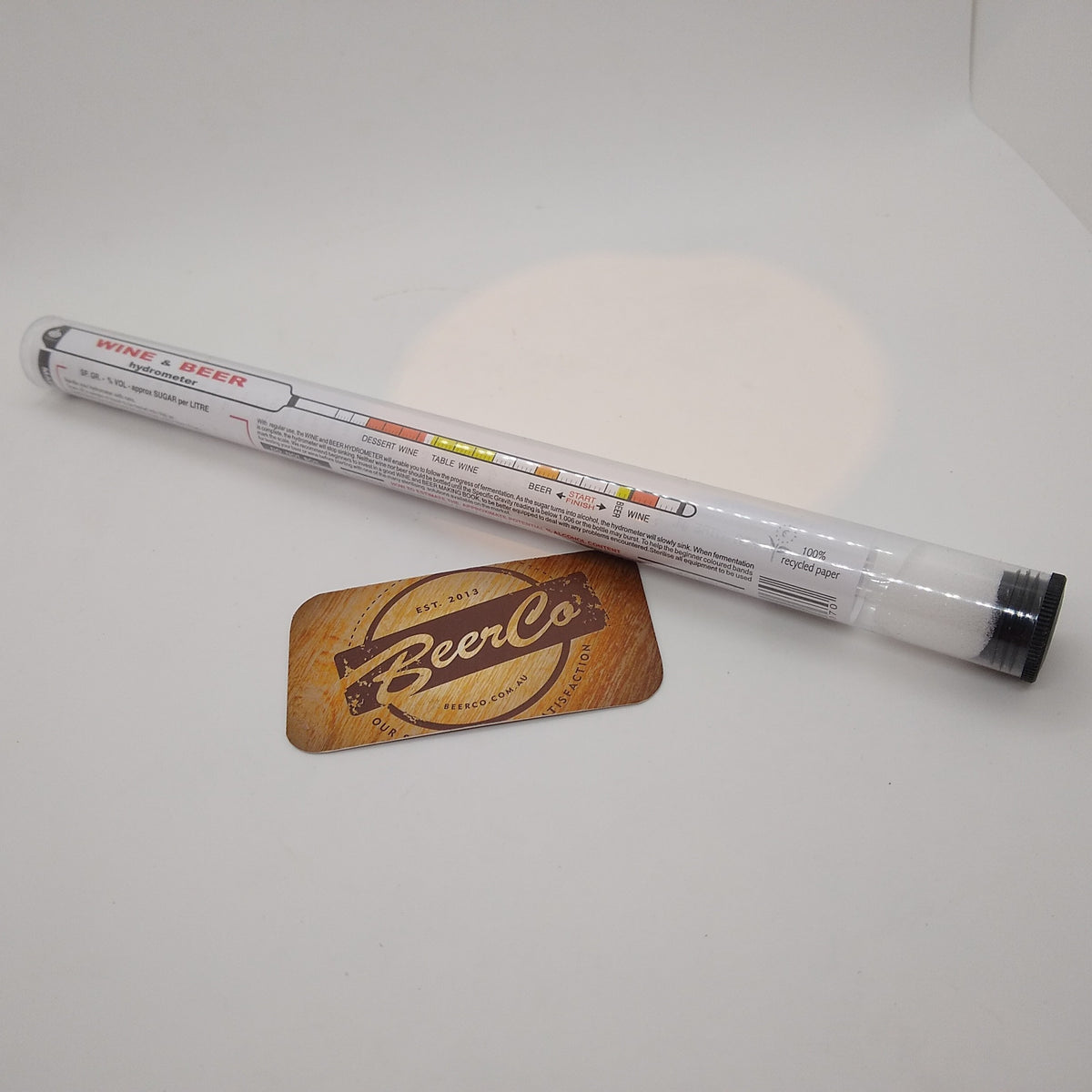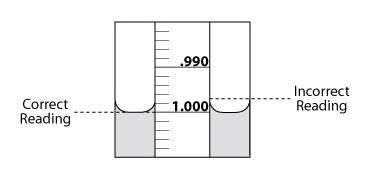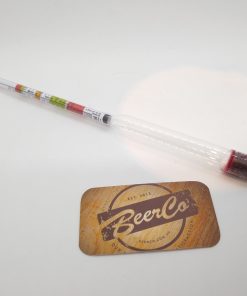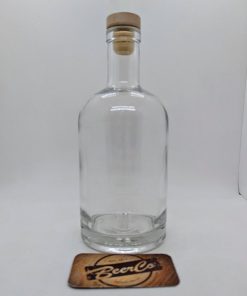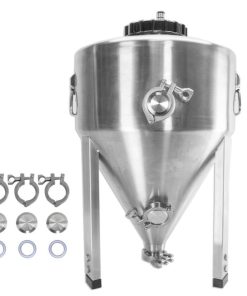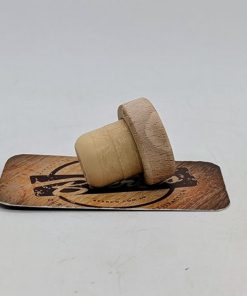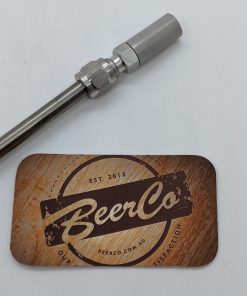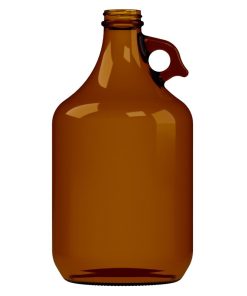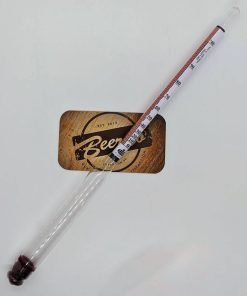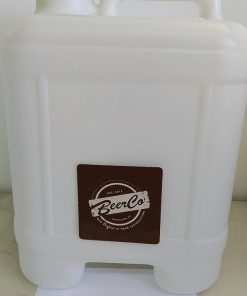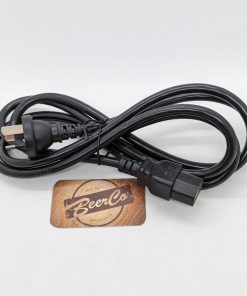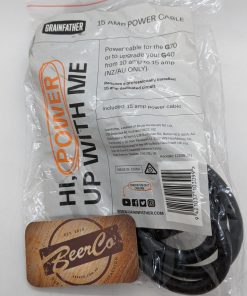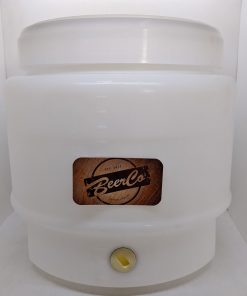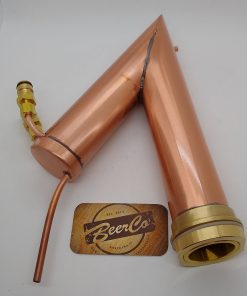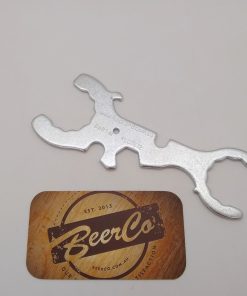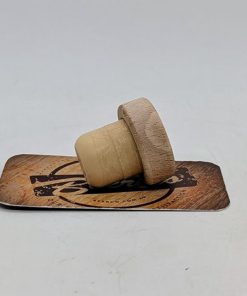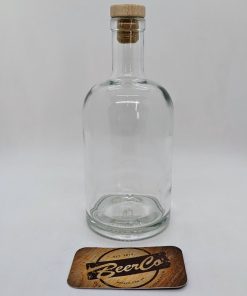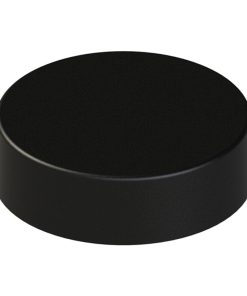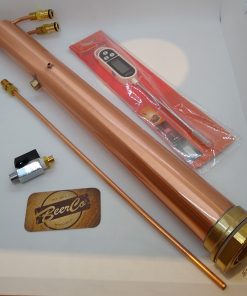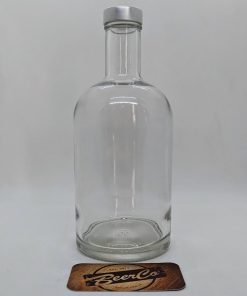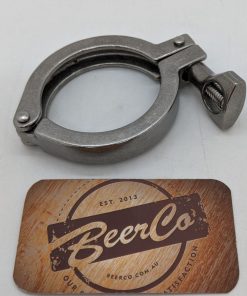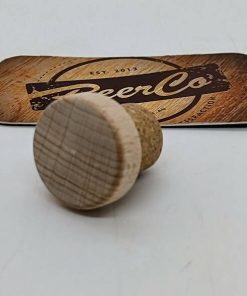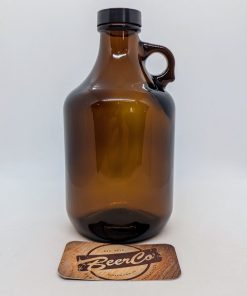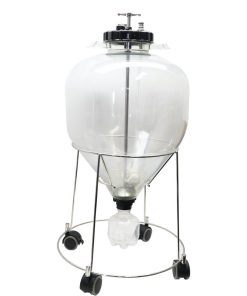Hydrometer Winequip
$ 9,95 $ 5,97
The Hydrometer is a professional-grade instrument used to measure the density of a solution. It utilizes a triple-scale to accurately measure Specific Gravity, Sugar and Starting/Finishing Gravity, making it a reliable tool for brewers and winemakers alike.
Hydrometers are an essential tool that allow homebrewers to measure the amount of sugar content in their wort. These hydrometers essentially just gauge how much sugar there is in a liquid. Taking this measurement both at the beginning and the end of fermentation enables one to calculate the amount of alcohol in the finished beer and to estimate how well the yeast has performed.
The Triple Scale Hydrometer, which tests starting and finishing beer gravity, or sugar content, in beer or wine fermentation, has three scales: specific gravity, potential alcohol and brix. A hydrometer is a necessary component of the beer making process that allows homebrewers to adjust and predict the integrity of their recipe by providing accurate readings of the beer’s sugar level as well as its specific gravity.
This blown-glass hydrometer has a narrow, lengthy stem and a weighted bottom that is bulbous enough to allow for floatation purposes. Inside the stem lies a scale that measures specific gravity, or the weight of the beer compared to the normal weight of pure water. Using this kind of measuring device tells the homebrewer how far along the beer has progressed in the fermentation process so that any necessary adjustments can be made before irreversible problems arise.
Using this Hydrometer is a convenient and affordable way for brewers and winemakers to:
- *Approximate an alcohol percentage potential when yeast pitching is occurring
- *Estimate alcohol percentage by comparing before and after rates
- *Accurately determine the completion of the fermentation process or when it needs to stop
What is the Specific Gravity Scale?
Floating this device in plain water will give you a specific gravity of 1.000, which is near the top of the scale. Because the majority of hydrometers are made to reflect accurate readings at around 20 degrees Celsius, water that is slightly cooler or warmer may show varying but similar readings. Placing this meter into sugary fruit juice, or any other liquid containing sugar, will cause it to float higher than it did in plain water. For example, testing one gallon of water containing two pounds of dissolved sugar reveals a specific gravity rate of around 1.068. You can find this number by searching for the number 60 on the scale (which actually means 1.060) and determining at which tick mark the reading stops.
What is the Potential Alcohol Scale?
The potential alcohol reading of your beer is provided by the specific gravity reading. Rolling the meter around until you reach the PA scale gives you a nine percent PA reading. This means that if you fermented all of your beer’s sugars into alcohol, the result would give you a nine percent alcohol rate (according to volume). Using a hydrometer also allows you to discover the actual rate of alcohol in your finished beer batch by providing your first and last fermentation readings. Simply subtract the final fermentation reading from your first fermentation reading and you will know the percentage of alcohol in your beer.
How To Use a Hydrometer:
Add your sample to the hydrometer jar (sample holder). Make sure the temperature is in the recommended range as per your specific hydrometer. Use enough sample to make sure the hydrometer does not touch the bottom of the sample jar. Place the hydrometer into the liquid and allow it to settle (maybe do this over a sink in case of overflow!). Take care that the hydrometer does not touch the sides of the hydrometer jar or it will throw the reading off. Where the liquid intersects the scale is your reading.
Important:
The liquid will lift up a little where it touches the wall of the sample jar and the hydrometer itself. This curve in the liquid surface is called a meniscus. Do not take your reading at the top of the lifted edge. Rather, take your reading at the lowest level of the liquid surface, the bottom of the “meniscus”, and project this onto the scale.
Fast shipping and professional packing
We offer a wide range of shipping options due to our long-running partnerships with UPS, FedEx and DHL. Our warehouse staff are highly trained and will package your items according to our precise and precise specifications. Before shipping, all goods are thoroughly inspected and securely secured. Every day we ship hundreds of packages to our customers from all over the world. This is a sign of our commitment to be the largest online retailer worldwide. The warehouses are located situated in Europe as much as they are in USA.
Note: Orders containing multiple items will have a different processing period for each item.
Before shipping the items, our staff will carry out an extensive inspection of the products you have ordered. The majority of orders are delivered within 48 hrs. The delivery time should be between 3-7 working days.
Returns
We don't manage the stock in our factory and warehouse. Actual stock levels may fluctuate at any moment. Be aware that it's possible that your order will be out of stock after you have placed the order.
Our policy is for 30 days. Unfortunately, if 30 days have passed from the date you purchased the product, we are unable to offer you a return or exchange.
The item must not be used, and it must be in the original packaging. It must also be in the original packaging.
Related products
Equipment
Equipment
Equipment
Equipment
Equipment
Equipment
Equipment
Equipment
Equipment
Equipment
Equipment
Equipment

